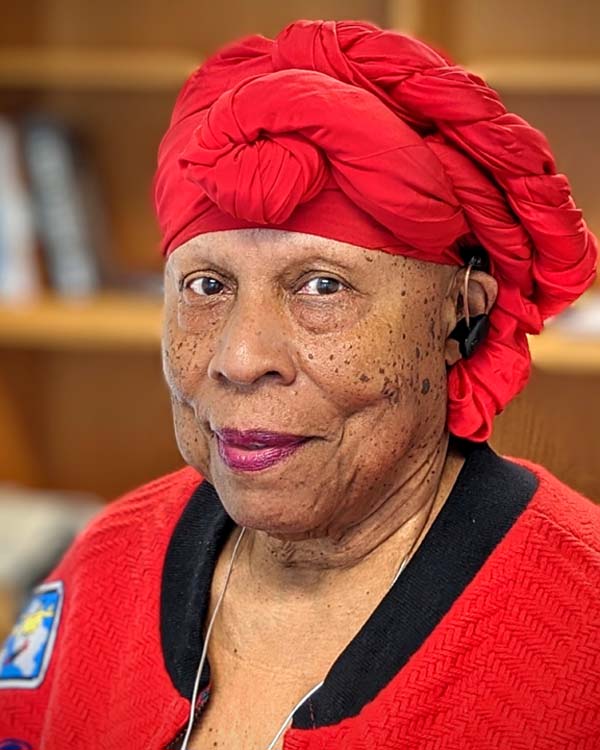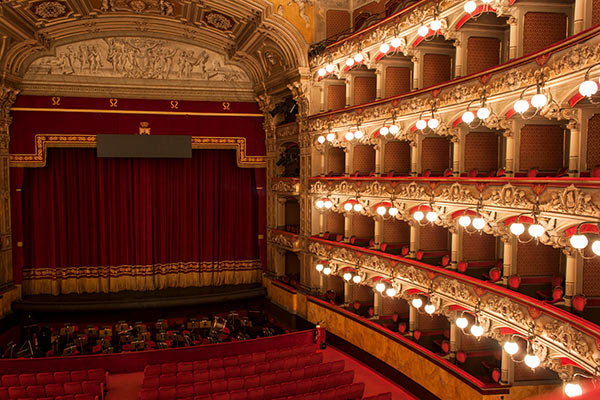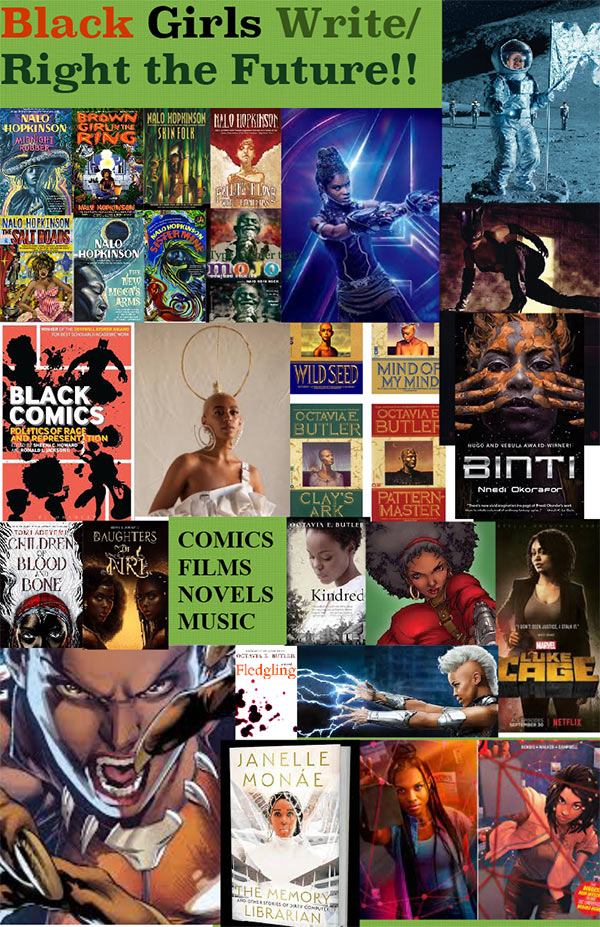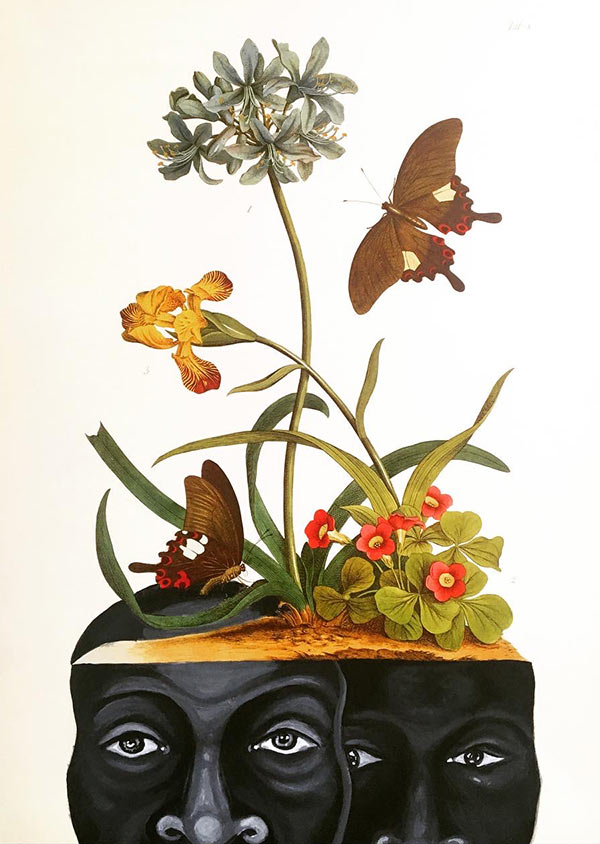In this issue, we highlight the research of Fellows from the class of 2022–23 whose projects examine the ways that Black Americans, especially women, have shared their experiences and perspectives across creative genres and, in so doing, challenged the ways that we think about music, fiction, and art.

Naomi André
University of North Carolina at Chapel Hill

Karima K. Jeffrey-Legette
Hampton University

Jontyle Theresa Robinson
Tuskegee University
Naomi André
Writing Opera, Singing Blackness in the United States
Naomi André is David G. Frey Distinguished Professor in the Department of Music at the University of North Carolina at Chapel Hill. Her research focuses on opera and issues surrounding gender, voice, and race in the US, Europe, and South Africa. Her publications include topics on Italian opera, Arnold Schoenberg, women composers, and teaching opera in prisons. Her book, Black Opera: History, Power, Engagement (University of Illinois Press, 2018) won the Lowens Book Award from the Society for American Music and the Judy Tsou Critical Race Studies Award from the American Musicological Society.

What was the initial spark that led you to this project? What are the big questions that you are considering?
First question, why is the practice of blackface and yellowface still active in opera? This has been true since opera’s earliest years in the seventeenth century up to the present moment; finally it is being questioned. Fortunately, we’re currently in the midst of seeing this practice dismantled. Second question, why are the joys and pleasures of opera seen as an elitist pastime only for wealthy and primarily white audiences? I knew as a Black opera fan and scholar that there were many Black opera singers and a huge amount of Black talent. This project set out to change the historiography around the presence of Blackness in opera by looking at singers, composers, librettists, directors, administrators, and those behind the scenes in opera production.
In the course of your research, have you run across anything that genuinely surprised you? What can you tell us about it?
I’ve written about opera post-apartheid in South Africa in Black and Mixed Race (“coloured”) populations, and I’m happily surprised to learn more about how opera has been produced across Latin America (especially in Argentina and Brazil) and East Asia (especially in Korea and China). Besides the cultural production of indigenous theatrical forms of music and drama, the adaptation of western opera outside of white-only spaces has been happily surprising. My focus is now on the Black presence in opera in the US, and I am working to expand the theory and historiography, taking opera outside of a white-only/primarily-white space and looking at the interracial, collaborative evolution of opera as a genre.
What new avenues of inquiry do you hope this research will prompt or make possible in your field?
My current work focuses on Blackness in opera. I hope to create a capacious enough zone for scholars to look at opera outside of and adjacent to the established practice that has focused on the white-only and primarily-white opera tradition. I think Asia and Latin America are new frontiers for exploring this veiled past. As with Black participation, I think there are “shadow cultures” (hidden from the primary historical narrative, yet happening alongside the dominant tradition) in opera for additional non-white populations.
Karima K. Jeffrey-Legette
Black Girls Write the Future: A Scholarly Investigation of Speculative Fiction by or about Women and Girls of African-Descent
Karima K. Jeffrey-Legette is associate professor of English at Hampton University. Interested in African-diasporic literature and multi-ethnic American studies, she has written and lectured extensively on topics related to cultural/cross-cultural expression. Her particular interest is in the response that scholars/writers have to colonization or oppression. Her current project, Black Girls Write/Right The Future: Speculative Fiction by or about Black Women and Girls continues the conversation, examining contributions to fiction, music, and animation/comics. In this instance, focal consideration is given to women as the content-creators.

What was the initial spark that led you to this project? What are the big questions that you are considering?
The driving question for this project is how empowering/disempowering renderings of African-descended women and girls are in today’s American popular literature and culture. In highlighting the innovations of writers like Nalo Hopkinson, N.K. Jeminson, and Nnedi Okorafor, I argue that the canon of African American literature has always been rooted in the fantastical (spirituality, conjurings, ghost-visions, hauntings, etc.). In addition, the project’s interdisciplinarity shows how others are comparably contending with what it means to capture reflections on race, gender, ethnicity/culture, and/or sexuality in their texts: for example, musicians and songwriters such as Solange, Janelle Monáe, and Missy Elliott, along with comicbook writers/inkers/animators who are further presenting provocative imaginings of Black women and girls in the mainstream media.
In the course of your research, have you run across anything that genuinely surprised you? What can you tell us about it?
Undeniably, today’s entertainment is more diverse than it has ever been. Turn on your television, stream footage, visit local movie theaters/concert halls/performance stadiums, and you will be remiss not to discover various representations of culture, gender, sexual orientation, and socio-economic experiences/perspectives. This discovery is refreshing. In addition, it has been reassuring to see an increase in gate-keepers/content-creators—particularly in film (horror—a surprise) and the comics. However, deficits remain. Subsequently, a paradoxical “catch-22” dilemma: Audience=Demand. Demand=Content. Content creates Audience. Racist/sexist/misogynistic images will persist as long as women, People of Color, and LGBTQ+ individuals are denied equal “seats at the table,” but such invitations are linked with consumer interests and values.
What new avenues of inquiry do you hope this research will prompt or make possible in your field?
I am trained as a traditional literary scholar. However, in doing this work, I am excited about adding my voice to a thriving field of cross-disciplinary work on Black speculative fiction. Along these lines, I have created a website, where I can blog on current topics. I will continue to tweak my syllabi, offering students opportunities to link their personal intrigue with academic pursuits (ex., research projects on gaming, Manga/anime characters, etc.). I am also excited about public lectures/conference presentations, whereby I can induce scholars and lay audiences to not only indulge in but think critically about popular entertainment. Also, I hope to explore pod/webcasting and other means for talking about speculative depictions of African-descended bodies, experiences, and perspectives.
Jontyle Theresa Robinson
1996 Bearing Witness: Contemporary Work by African American Women Artists and Revelations from Bearing Witness 2026
Jontyle Theresa Robinson is curator and assistant professor at the Legacy Museum at Tuskegee University. She curated and coauthored “Bearing Witness: Contemporary Works by African American Women Artists,” the first exhibition/catalogue of contemporary African American women artists touring America, for the Spelman College Museum of Fine Art’s contribution to the 1996 Olympics. She is presently conducting research for the thirty-year anniversary of “Bearing Witness,” a digital version of the 1996 exhibition, and an exhibition and catalogue called “Revelations from Bearing Witness” for 2026.

What was the initial spark that led you to this project? What are the big questions that you are considering?
[The initial spark for this project was] the paucity of materials about the rich, enduring legacy of African American women and the works they created in this country since arrival on these shores in 1619. How can we ensure that the cultural heritage of African American people is preserved and how can we ensure that young African Americans understand the importance of art conservation and cultural heritage preservation?
In the course of your research, have you run across anything that genuinely surprised you? What can you tell us about it?
That Black women pursued art professionally and in their communities as artisans. Even with incomprehensible opposition, Black women forged ahead to be art makers and visual art creators. It’s astounding. How artists like Edmonia Lewis (born July 4, 1844 in Rensselaer County, New York–died September 17, 1907 in Hammersmith, London, United Kingdom) Nancy Elizabeth Prophet (born March 19, 1890 Warwick, Rhode Island–died December 13, 1960 Providence, Rhode Island) and Augusta Savage (born February 29, 1892 in Greencove Springs, Florida–died March 1962 in New York City) made art in spite of the systemic obstacles to intervent and prevent them from creating. And there are others. Their will to create in less than optimal surroundings and conditions is astounding!
What new avenues of inquiry do you hope this research will prompt or make possible in your field?
My research will bring to the fore an army of young, gifted Black art historians, art conservators, museum administrators, museum educators, art handlers, museum curators, museum development specialists, and legions of artists so that the rich collections of art housed at HBCU museums and galleries will be protected and preserved. And, more work needs to be done on Black women artists from Africa, the Caribbean, South America and North America. It has, also, been my privilege to found in 2017 the Alliance of HBCU Museums and Galleries, a consortium of twelve institutional museum and gallery members to support this work.
